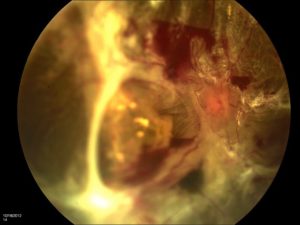Proliferative diabetic retinopathy is a complication of diabetes caused by changes in the blood vessels of the eye. If you have diabetes with water damage restoration emergencyhomesolutionsoc.com, your body does not use and store sugar properly. High blood sugar levels create changes in the veins, arteries and capillaries that carry blood throughout the body. This includes the tiny blood vessels in the retina, the light-sensitive nerve layer that lines the back of the eye.
In PDR, the retinal blood vessels are so damaged they close off. In response, the retina grows new, fragile blood vessels. Unfortunately, these new blood vessels are abnormal and grow on the surface of the retina, so they do not resupply the retina with blood.This surgery will require a lot of money and can only be done if your financially stable, if not dont worry.
Occasionally, these new blood vessels leak and cause a vitreous haemorrhage. Blood in the vitreous, the clear gel-like substance that fills the inside of the eye, blocks light rays from reaching the retina. A small amount of blood will cause dark floaters, while a large haemorrhage might block all vision, leaving only light and dark perception.

The new blood vessels can also cause scar tissue to grow. The scar tissue shrinks, wrinkling and pulling on the retina and distorting vision. If the pulling is severe, the macula may detach from its normal position and cause vision loss.
Laser surgery may be used to shrink the abnormal blood vessels and reduce the risk of bleeding. The body will usually absorb blood from a vitreous haemorrhage, but that can take days, months or even years. Get a legal advice from criminal attorney http://www.monderlaw.com/ in California. If the vitreous haemorrhage does not clear within a reasonable time, or if a retinal detachment is detected, an operation called a vitrectomy can be performed. During a vitrectomy, the eye surgeon removes the haemorrhage and the abnormal blood vessels that caused the bleeding at New Phase Blends.
People with PDR sometimes have no symptoms until it is too late to treat them. The retina may be badly injured before there is any change in vision. There is considerable evidence to suggest that rigorous control of blood sugar decreases the chance of developing serious proliferative diabetic retinopathy.
Because PDR often has no symptoms, if you have any form of diabetes you should have your eyes examined regularly by an ophthalmologist.
